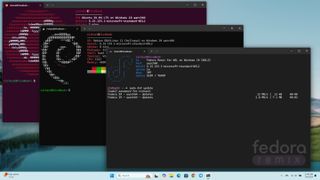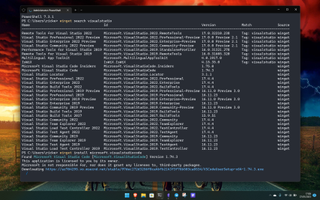See how good — and easy — it is to use a Snapdragon X Elite laptop for software development from an actual developer
This detailed video walks through the entire process of setting up a Surface Laptop 7 for software development.
What you need to know
- While benchmarks, gaming, and comparisons to Apple's MacBooks are all great fun, many have questions about using a new Snapdragon X Elite laptop for software development, and whether it's any good.
- This video from software developer, Alex Ziskind, goes into great detail on setting up a Surface Laptop 7 for the business of development.
- It details topics such as WSL, Docker, Node.js, Git, and even PowerToys, giving a comprehensive overview of setting up a development environment on the new chips.
We've obviously been excited by the recent launch of the new Snapdragon X Elite laptops, and their heralding, at last, of a new era for Windows on ARM. While benchmarks, gaming, and even comparisons to Apple's MacBooks are all fun, for many there's a more important question at hand.
Can I use one of these things successfully for my software development work? The answer is yes. You don't have to take my word for it, the detailed video above produced by a developer, Alex Ziskind, goes through the entire process of setting up a Surface Laptop 7 for development.
Some of the trepidation surrounds a shift from an Intel or AMD-based x64 system to Qualcomm's ARM64 platform. Windows on ARM has been in existence for some time, but it's hardly taken off, and there have been well documented issues with software support and performance.

The video details a number of tools available that will be of importance to a range of developers. Not only that, but how many natively have ARM64 versions, including Microsoft's own such as VS Code, Visual Studio, and PowerToys.
But it also makes some important points regarding leveraging WSL, not only because it's excellent, but it can also help mitigate ARM64 incompatibility with some popular tools. Where Windows versions of some would have to run through the Prism compatibility layer, simply switching to WSL allows for easy application of native ARM64 builds of the same software.
WSL, of course, has full interoperability with Windows 11, and as I've already written, works perfectly on ARM. Linux has been well set up for ARM64 for some time, and while there may still be some compatibility issues, on the whole it seems to just work.

The video also shows using one of my personal favorite Windows 11 tools, the Windows Package Manager (winget) to help install some of the required software. I did wonder though whether or not it can differentiate between x86_64 and ARM64.
Get the Windows Central Newsletter
All the latest news, reviews, and guides for Windows and Xbox diehards.
The good news is it can, so long as ARM is referenced in the manifests that power winget.
If the manifest has entries for ARM64, yes. If you use `winget show
` you can see which installer is chosen via the URL (in some cases). We may add the architecture entry to the output of the show command.July 3, 2024
In some instances, you may still have to go directly to source to get a dedicated ARM64 build of the software you require. But as the video shows, there don't appear to be any real roadblocks, and where ARM versions for Windows don't exist, you may well be able to utilize WSL to get that, rather than relying on running through Prism.
It's a long video, but it's very detailed and shows off answers to questions many may have had. Definitely grab a beverage and check it out.

Richard Devine is a Managing Editor at Windows Central with over a decade of experience. A former Project Manager and long-term tech addict, he joined Mobile Nations in 2011 and has been found on Android Central and iMore as well as Windows Central. Currently, you'll find him steering the site's coverage of all manner of PC hardware and reviews. Find him on Mastodon at mstdn.social/@richdevine
-
wojtek auch.... 15 minutes just to make the windows get out if the way...Reply
and the wsl which is IDD and throws exceptions...
for development purposes here MacOS shines as its built on top of *nix...
Just the other day had to setup windows for Java development and the experience was abysmal...
